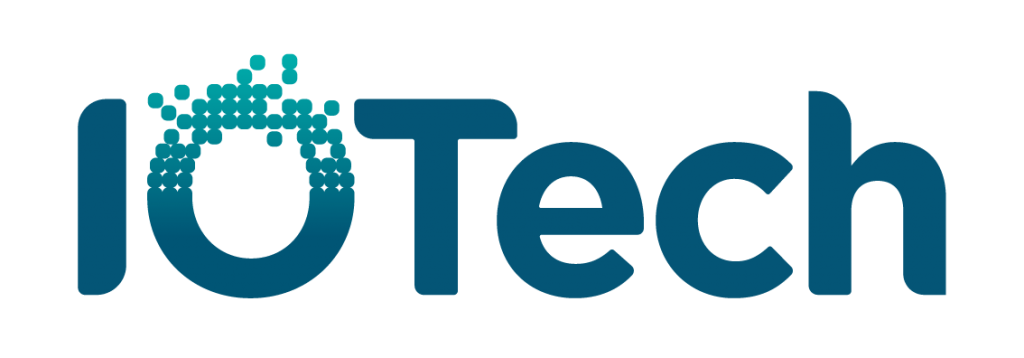Edinburgh, UK. 17th November, 2021 – IOTech, an edge software company, expects to see a proliferation of artificial intelligence (AI) and machine learning at the IoT edge soon, and that edge-cloud architectures will be the norm.
The company also believes that the effect of edge computing on blockchain and other digital ledger technologies will become clearer in a few years. Similarly, 5G’s impact on edge computing is still too early to forecast.
“This past year, we’ve seen edge computing emerge from pilot programs to deployments,” says Jim White, CTO, IOTech. “We believe 2022 will be the year that edge computing is fully integrated into the architecture of every major industrial IoT system.”

IOTech’s 2022 predictions are related to technology advancements, architectures and impact to industries.
Trend 1: There will be pervasive adoption of AI/ML at the edge
The new status quo, Edge systems will incorporate AI and machine learning. Simple rules engines and edge analytics are already at the edge. Today, organisations demand more intelligence at the edge. The raw compute to run AI/ML at the edge was a prohibiting factor, but this is no longer the case.
While training ML systems will occur largely in the cloud or in the enterprise, ML models running on lighter AI runtime engines at the edge are more common place and will soon be the norm. Visual inference has been a leading use case, but other AI/ML solutions are soon to follow. Edge platform providers will play a key role in developing solutions that can easily integrate AI/ML technologies.
Trend 2: Hybrid edge-cloud architectures will be the norm
It’s not edge compute “or” cloud compute, it’s a case of “and.” Organisations are finding that processing edge data needs to be performed at the edge and in the cloud or enterprise. Although initially there was much excitement related to the cloud providers reaching down to the edge, the reality is that there are significant challenges in moving all edge data to the cloud and performing all the processing in the cloud.
The cost of data transport, latency issues and security/data privacy concerns are among the chief challenges. Likewise, the raw processing power of the edge and the ability to do deeper exploration of the edge data over longer periods of time for better insights means edge computing alone is not a solution. Solutions must allow for the right processing at the right levels, and this calls for hybrid edge-cloud architectures.
Trend 3: The industrial sector emerges from edge/IOT research mode
The industrial sector is becoming focused and organised in its effort to offer new solutions at the IoT edge. Businesses in manufacturing, building automation, and smart energy are in full “build” or “buy” mode for IoT edge solutions. Many large industrial-sector businesses are fully committing to grow their edge/IoT products and strategy. Buy mode leads when companies need to accelerate digital transformation.
Trend 4: Customers will demand solutions rather than pieces/parts
Companies looking to benefit from edge/IoT technology are looking for more fully integrated solutions. They want immediate tangible business outcomes and are not interested in receiving a bucket of technology parts that they have to pull together themselves. For system integrators, it means developing the right technology partnerships to pre-assemble and deliver complete solutions to customers. Integrators will naturally gravitate to edge products that are inherently more open and flexible as these will be easier to integrate and adapt to more use cases.
Trend 5: Realisation that K8s is not enough edge management
Organisations deploying and orchestrating IoT/edge applications are discovering that Kubernetes is not always a fit in resource-constrained edge environments. Furthermore, K8s only addresses part of the edge management need. There is more to edge management than managing/monitoring containers. An edge management solution must deal with preparing, managing, and monitoring the host edge nodes, allow for rapid configuration changes, and even assist in sensor/device onboarding.
K8s will be part of some edge management solutions, where more resources or smaller K8s solutions (K3s as an example) can be applied. However, the thin, resource-constrained, network-constrained, latency-concerned, sometimes non-containerised, OT device-touching environments demand alternative and more complete edge management solutions.
In addition to these predictions, the company also offered these insights:
Traditional IT hardware OEMs will need to develop edge/IOT strategies
Edge solutions don’t start with the selection of IT hardware. They start by addressing the challenge that is being solved or the outcome that is needed and then building the right system to meet these requirements. As the IoT edge becomes ubiquitous, all layers of the architecture need to be an effective part of the solution. Traditional IT hardware OEM vendors need to ensure they have a vision and strategy in the edge/IOT space or risk becoming irrelevant or a commodity to edge customers.
Digital twin standards are needed to ensure the pace of innovation
The current lack of a digital twin standard is hampering adoption and requiring organisations to roll their own interoperability solutions or be locked into a single provider’s implementation. With digital twin technology increasingly becoming a sought-after part of the IoT solution, a standard is the next logical and crucial step to drive innovation.

The use of digital ledger technology (i.e., block chain) will start to grow
The need to deliver data from the edge with trust and confidence, and to be able to govern its ownership and distribution given the distributed nature of edge data, clearly points to the use of block chain and other digital ledger technology. At some point in the not-so-distant future, organisations implementing edge solutions will want to monetise edge data and will look to properly protect, label, distribute and score edge data.
Noise level for edge and 5G will continue
From an edge platform perspective, 5G provides a bigger, stronger, less-latent pipe between the edge and the enterprise or cloud. Because it can reduce latency, 5G can allow more processing to occur in the cloud. 5G could become more interesting to edge/IoT solution providers as telecos work toward implementation of private (or semi-private) 5G installations in factories, stores, campus, etc. that allow more “things” to be connected but in a secure and isolated way.
COVID sped up challenges that were already exhibiting
Supply chain issues and human resources challenges were already beginning to be exhibited prior to the pandemic. COVID accelerated and heightened these issues for organisations. As businesses and industries emerge from the pandemic, 2022 cannot be a return to normal. Companies must innovate and use technology to address the aforementioned challenges. Therefore, IOT edge adoption will accelerate. It will be the year that companies transition from research and pilot programs to launches and deployments at scale.
Comment on this article below or via Twitter: @IoTNow_OR @jcIoTnow










